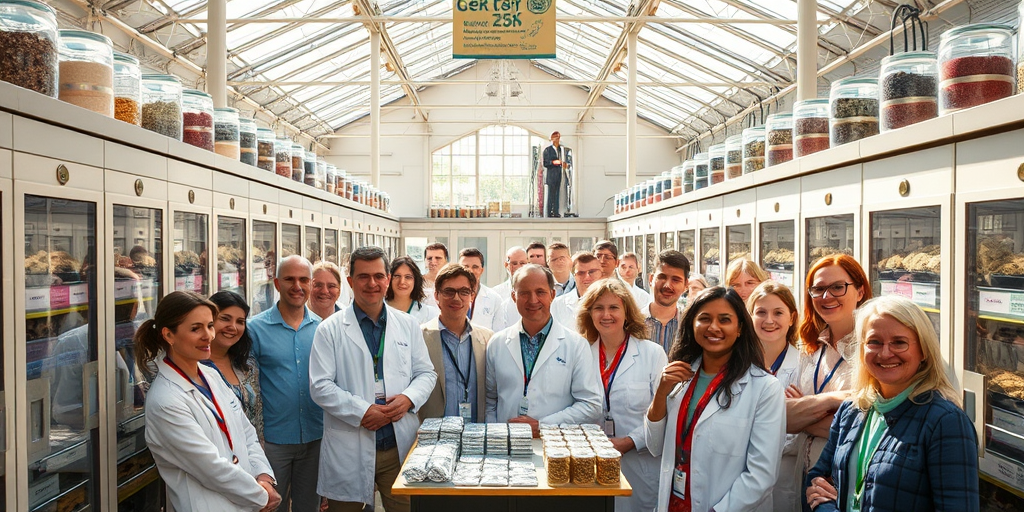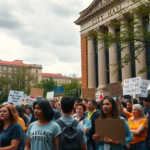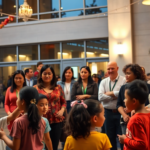Millennium Seed Bank Celebrates 25 Years of Preserving Global Plant Diversity
A quarter of a century since its establishment, the Millennium Seed Bank at the Royal Botanic Gardens, Kew, stands as a monumental archive for global plant conservation. Celebrating its 25th anniversary, the facility, nestled deep within the Sussex countryside of England, houses more than 2.5 billion seeds from around 40,000 plant species. This living repository serves as an ecological insurance policy against extinction, safeguarding the genetic diversity necessary for future environmental restoration.
A Milestone backed by Royal Endorsements and Innovations
Opened in 2000 by King Charles III, then the Prince of Wales, the Millennium Seed Bank continues to be supported by the King, who remains actively involved in Kew’s conservation efforts. His participation alongside actress Cate Blanchett and scientist Elinor Breman in a new anniversary podcast highlights the Bank’s vital role in ecosystem restoration and climate resilience.
“This project is about ensuring our natural world remains vibrant and richly diverse,” remarked King Charles III. “It is not just a safeguard, but a promise to the future.”
From Field to Freezer: Securing Plant Diversity
The Bank’s success is underpinned by meticulous processes beginning far away in diverse regions, including Madagascar and Arctic Sweden. Field collectors gather seeds under varying climatic conditions, sending portions to Kew. These seeds undergo a drying process maintained at 15 degrees Celsius and 15% humidity, significantly prolonging their viability by slowing decay processes. Once dried, seeds are cleaned and tested for viability before being stored at minus 20 degrees Celsius.
“Drying is the first step in increasing the longevity of those seeds,” explains Elinor Breman, senior research leader at Kew. “Germination tests then confirm a seed’s viability.”
For tropical plants whose seeds can’t withstand freezing, innovative cryopreservation techniques using liquid nitrogen have been developed, ensuring broader conservation efforts.
A Global Partnership for a Shared Goal
The Seed Bank operates through collaboration with 279 partner organizations across over 100 countries, establishing an expansive network dedicated to plant conservation. These partnerships have enabled projects like the reintroduction of native species and restoration of ecosystems, both locally in the United Kingdom and globally.
Dr. Dale Sanders, a biologist and former director at the John Innes Centre, underscores the importance of such efforts: “The genetic resources stored here are crucial as we face population growth and diminishing agricultural land. Genetic diversity within species forms a defense against diseases, climate changes, and other emerging threats.”
Local Relevance: Training Science Ambassadors
The workforce underpinning these monumental conservation efforts is bolstered by Kew’s commitment to education. Over 3,000 scientists from 70 countries have received training in seed collection and conservation techniques, enhancing global capacities to combat biodiversity loss.
Luis Ramirez, a botanist trained by Kew from New Mexico, testified to the program’s impact: “The knowledge gained here is invaluable for advancing conservation innovations in areas vulnerable to climate change, much like our own Southwest.”
Future Horizons: Expanding Conservation Frontiers
Looking ahead, the Millennium Seed Bank aims to amplify its impact over the next 25 years. Through its newly launched £30 million Seeds Future Fund, Kew plans to finance ongoing research and foster new international partnerships. This expansion seeks to harness the potential of preserved seeds in combating biodiversity loss and mitigating the effects of climate change.
Rachael Davies, a germination specialist, points out the practical implications: “These seeds hold solutions, not just for restoration projects, but as part of adaptation strategies to global warming.”
Balancing Perspectives: Opportunities and Challenges
While the Seed Bank offers a beacon of hope, its undertakings attract diverse views. Some express concern about the focus on seed storage overshadowing immediate conservation action in ecosystems under threat. Balancing long-term preservation with short-term ecological interventions remains critical.
Daniel Jenkins, an eco-activist from California, emphasizes this dual approach: “While seed banks are vital for securing plant diversity, they should complement on-the-ground conservation, not replace it.”
Engaging with the Community and Beyond
The Millennium Seed Bank anniversary brings renewed attention to environmental stewardship. For community members interested in plant conservation or wishing to contribute, Kew offers public tours and educational resources on its conservation methods, encouraging wider public involvement in ecological advocacy.
As nearly half of all flowering plants face the threat of extinction, the Millennium Seed Bank’s mission to preserve genetic diversity stands crucial. Its efforts touch not just the environmental fabric of Britain but resonate globally, signaling a shared commitment to safeguarding the planet’s botanical wealth for succeeding generations.







